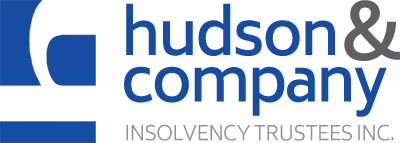CRA Debt Forgiveness
In Calgary & Southern Alberta
Considering your options? Get professional advice with a free and confidential phone call!
Dealing With Income Tax Debt
An Increasing number of people in Canada are finding themselves with tax debt. Even if you file your taxes every year, it is still possible to end up owing the Canada Revenue Agency (CRA). There are many reasons a person may find themselves owing a substantial tax debt. Typically, an employer will deduct taxes from your earnings. This usually ensures that you do not become liable for additional taxes on your income. Where a lot of people run into problems is alternative sources of income. This could include any secondary business, multiple pensions, and business owners. In the majority of cases, persons who work for themselves or have secondary sources of income are at a higher risk. If you are facing tax debt, choosing the right licensed professional could save you hundreds of thousands of dollars. Are you wondering if you should seek advice from an accountant, tax lawyer, or licensed trustee? We have answers.
Here, we explain the best and most affordable options for resolving tax debt. In the right circumstance, a person may be able to negotiate directly with the CRA to repay their tax debt in full, plus interest, during a one year period. This only works for individuals with relatively simple tax debts and the financial ability to repay what they owe in a single year. For most tax debts, more expertise is required. So many people with tax debt spend thousands of dollars out of pocket on tax lawyers and accountants only to find themselves in more debt. At Hudson & Company, we want you to be able to make an informed decision about your finances.

“They were kind, compassionate and professional, and always acted without judgement.”
Talk To A Professional
Get professional advice from a Licensed Insolvency Trustee. No cost. No obligation.
What Are My Options for CRA Debt Forgiveness?
So you owe Canada Revenue Agency a significant amount of money in tax debts. First of all, you are not alone. At least half of the people are looking for help with money owed to the government. What are your best options? As licensed insolvency trustees, we specialize in debt resolution. When it comes to tax debt, the only option for repaying less than you owe is through filing a consumer proposal. This is often the most affordable alternative to bankruptcy. But, depending on your circumstances, it may be better to get a completely fresh start by declaring bankruptcy. A trustee will evaluate your situation to find the best debt solution for you. If you owe the government more than you are able to repay, there are two guaranteed types of debt resolution that are acceptable to the CRA:
- Filing a consumer proposal – if you are financially unable to repay your tax debt, a consumer proposal is the only form of debt resolution that the CRA accepts. A proposal involving the CRA includes all taxes owing until the previous year and any other outstanding insolvencies you may have. Note that taxes owing for the current year must be handled differently and a LIT will advise you accordingly. For a standard CRA proposal, a licensed trustee will work one-on-one with you to put together a proposal you can afford. Once filed, there is a vote amongst creditors. If you owe the most substantial amount of money to the CRA, they will have the deciding vote. If other creditors hold more than 50% of the total amount you owe, they hold the majority ruling. A significant advantage to a consumer proposal is that it is legally binding on ALL creditors, including the Canada Revenue Agency.
- Declaring bankruptcy – if you cannot afford to repay the CRA and you do not qualify for a consumer proposal, the next option is bankruptcy. This action ensures that your debts are resolved quickly and gives you the opportunity for a fresh start. Any legal action against you will stop immediately, and you will begin the process of repayment by turning over your assets.
Canada Revenue Agency holds stringent policies around debt forgiveness. They require full disclosure of assets administered by a Licensed Insolvency Trustee through a consumer proposal. No other methods of debt resolution are accepted by the CRA. Informal debt settlements or repayment plans through counselling agencies will NOT be accepted by the Canada Revenue Agency. A legally binding consumer proposal can only be administered by a Licensed Trustee. At Hudson & Company, we know that most of our clients are struggling financially. Your initial consultation with a licensed trustee is always free of charge. We are here for you to answer all your questions and help you achieve your goal of debt freedom.
Repayment of tax debt through a Consumer Proposal
A CRA proposal is designed to allow you to repay your tax debt for less than you owe. A licensed insolvency trustee will negotiate with the CRA on your behalf to come up to with an amount that you can afford, and the CRA will agree to. Tax lawyers can assist with a dispute and payment arrangement, but they cannot negotiate repayment at a lesser amount. And their services are not cheap. By law, tax debt forgiveness through a consumer proposal can only be achieved through a licensed trustee.
Every consumer proposal is reviewed by the CRA. Your case is presented and evaluated, along with the following factors:
- Do you have a prior history of owing money to Canada Revenue?
- Do you currently have unpaid tax returns?
- Do you have outstanding debts with other collectors?
- Do you have a steady income to make regular payments?
- Are you paying as much as you can towards your debts?
- Will a consumer proposal pay the CRA more than they would receive in the case of bankruptcy?
Canada Revenue Agency will be much more likely to accept your proposal if your tax debts are a result of innocent error rather than intentional tax evasion. Regardless of how you accumulated your debts, our licensed professionals can help you find a solution.
Vote of Creditors
Consumer proposals are legally binding on all creditors, including the Canada Revenue Agency. When filing for a CRA proposal, having other personal debts may actually be helpful when it comes to the vote of creditors. If your tax debts are less than what you owe to other creditors, CRA will not hold the majority vote. In the event that the vote is not unanimous, the majority vote is strictly based on dollar value. While the CRA may decide to vote against your proposal, they must abide by the majority vote and terms of the proposal. If you a significant amount of money to the CRA, it is possible for them to appeal a review of the proposal. In this case, a licensed trustee will work within your budget to make a settlement offer.
Filing for Bankruptcy
In some cases, bankruptcy offers the best solution for overwhelming tax debt. It will get you out of debt relatively quickly and allow you to start over. Keep in mind that declaring bankruptcy for tax debts can work somewhat different from personal bankruptcy. If your tax debts are more than $200,000, the CRA may request a court hearing to look into your financial history and ability to make your payments. A court order of payment for a portion of your debts may take effect. It is possible for the courts to refuse discharge from bankruptcy, although this is very rare.
If you are discharged from bankruptcy, you may still have property tax liens. The CRA has the ability to place a lien against your property without your consent. If you think this is a possibility, we recommend discussing this with your licensed insolvency trustee before filing for bankruptcy. A LIT has the ability to find out if a lien has been registered. They can also find out the amount of your lien. If a significant portion of your debt is already placed against your property, it will not make sense to file for bankruptcy. Keep in mind that once you have filed for bankruptcy, the CRA is no longer able to open a lien on your property.
CRA Collections
In the case of tax debt collections, the CRA will often take action by garnisheeing your wages and/or freezing your bank account. Like waking up a sleeping bear, the CRA can act quickly and suddenly. With personal debts, creditors may take similar steps, but it can take months to take effect. A court order must be obtained to garnish earnings, and it can take up to a year to come into force – during which time you will be notified of the impending action. On the other hand, the CRA needs a simple signature from tax authorities to initiate collection action. Are you self-employed? The CRA will simply go about sending an official notice to the businesses that contract you requiring that payment be sent to the CRA rather than you.
If you have experienced collections in the past, the CRA has a lot more power than other creditors and can take action very swiftly and relentlessly. The sooner you take steps to address your tax debts, the better. You are wondering how to get started? Book a free consultation with a licensed insolvency trustee and get expert advice.
We are here to help!
We understand that dealing with tax debt can be very stressful. By selecting the right professional, you can save thousands of dollars. We are here to help. You are not under any obligation. You choose your next steps. But first, we recommend having a knowledgeable expert review your options with you. Call 1-403-265-4357 to make an appointment!


